2022 YZ 125 Introduction
By Matt Mattoon and Jimmy Lewis
Photos By Trevor Hunter
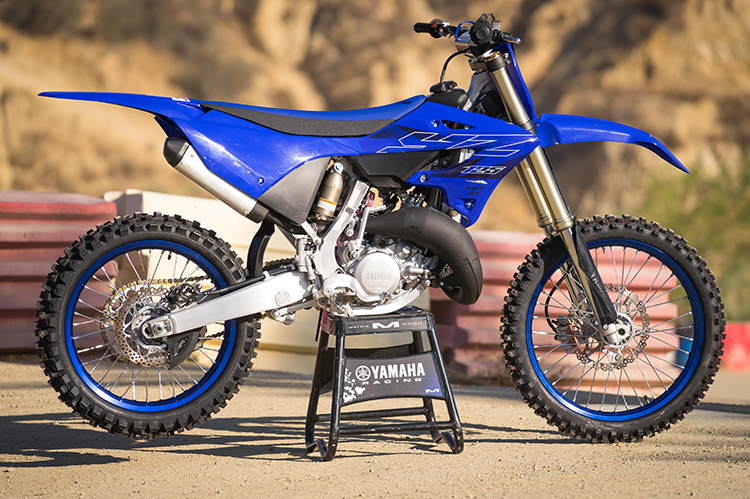
Yamaha has been making a YZ125 since— well, likely before you were born. In your history, 2005 was the last major revision with an aluminum frame. But 2022 brings an all-new engine and bodywork. There is a reason and we’ll explain why.
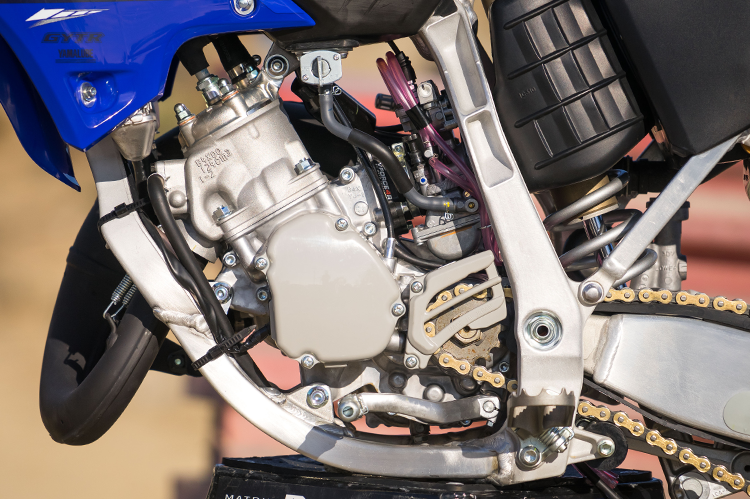
The 2022 YZ125 features a plethora of updates, which include a 8 mm longer connecting rod, heavier crankshaft, increased flywheel weight, and redesigned power valve. The combustion chamber shape results in a 2.1% volume increase that leads to a decrease in the compression ratio which will help with todays inconsistent gas from the pump. These changes were made with hopes of giving the YZ125 more power in the mid to high range of its powerband, while adding to the machine’s longevity.

Supplying the engine with fuel is a new, bigger Hitachi Astemo Keihin PWK38S carburetor that features a throttle position sensor and a power jet that opens at 5000 RPM before closing at 9500 RPM when the TPS senses a big throttle opening we were told. This Power Jet acts in a way like a pump-squirt did in four-stroke carbs but relies on suction rather than forced pressure. Carburetors, by the way, are an ancient technology that rivals fuel injection for performance and power but requires analog tuning and is only used for competition machinery these days, kids. This bike also features a new CDI unit with three-dimensional mapping that looks to give a more crisp throttle response in hopes of further emphasizing that mid-to-high pull. 3D mapping can take into consideration throttle position and RPM to provide the best ignition mapping as the jetting reminans constant. Yamaha also attached a new, lighter weight muffler and a tuned expansion chamber to get the power just right.
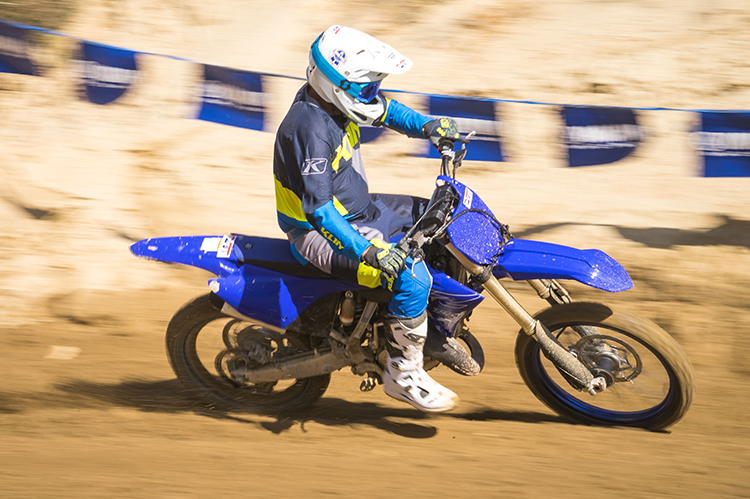
The six-speed, close ratio transmission saw some changes as well, the width of each gear has been widened and the ratios have been changed to give improved ratios and more durability, claims Yamaha. The final drive ratio has been altered to make Motocross Action Magazine (one tooth larger on the rear) and the rest of the world happy, if that is even possible.
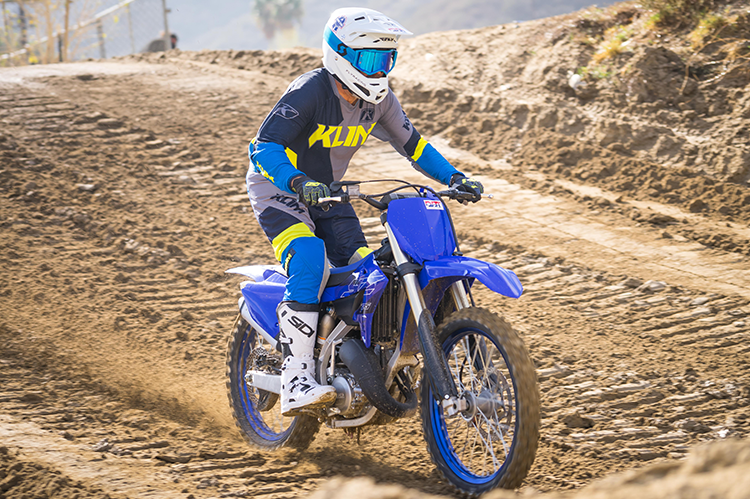
In the early days of YZ125 time, Led Zeppelin said the “Song Remains The Same.” Since 2005, long after Zep, the Aluminum frame remains the same. New brakes that feature a more rigid front caliper, larger front pistons and a redesigned rotor that increases the pad contact area in hopes of better stopping power. The KYB forks now include a leaf spring in the mid speed valve and the KYB shock has been revised to include a reduced friction Kashima Coat internals. Both the forks and shock come with new spring rates and updated clicker settings.
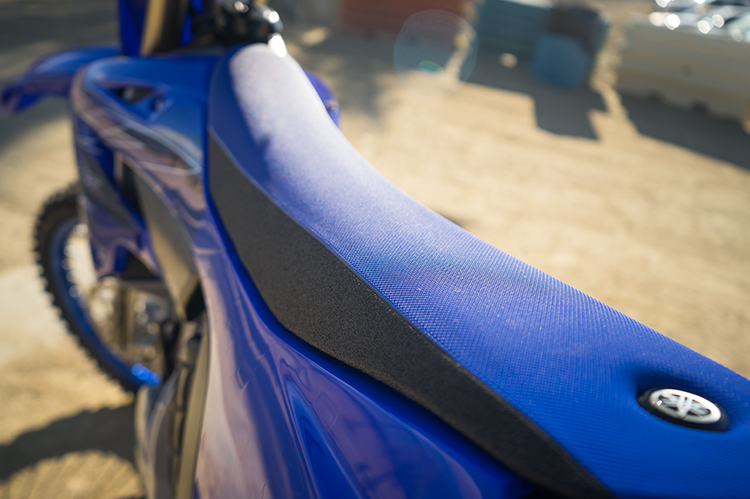
The rider ergonomics have also been updated with a narrower tank, flatter seat and slimmer radiator shrouds that go over the tank rather than bolting to it. Yamaha also changed the intake to be more of a straight shot straight through smoother air channels that suck air in through the back of the bike, rather than coming in from the ends of the side plates. The graphics are now embedded with the plastics in hopes to improve durability and resist scratches. Seat removal is via a single bolt located under the rubber cap at the rear of the seat. The Company says all of these updates to the ergonomics results in a lightweight chassis that is finely tuned for nimble handling and more control resulting in less rider fatigue.
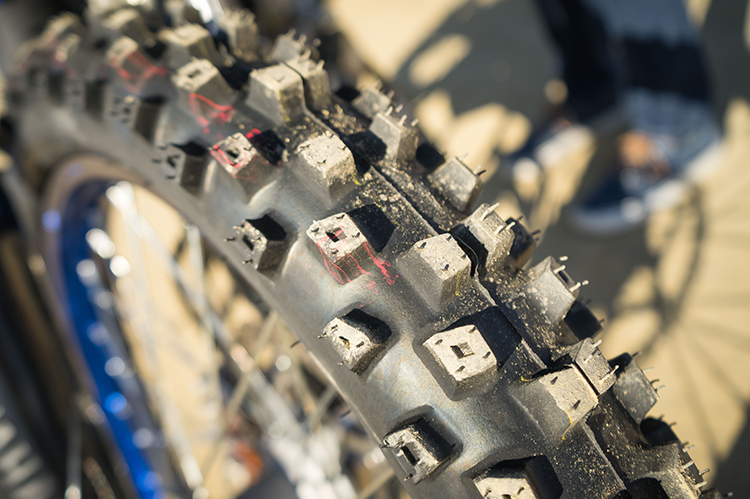
Connecting the bike to the ground are Bridgestone X20 tires rather than Dunlops that came on this bike for years. With the changes now listed out, it’s time to find out if we are bearish or bullish on this classic motocross machine.
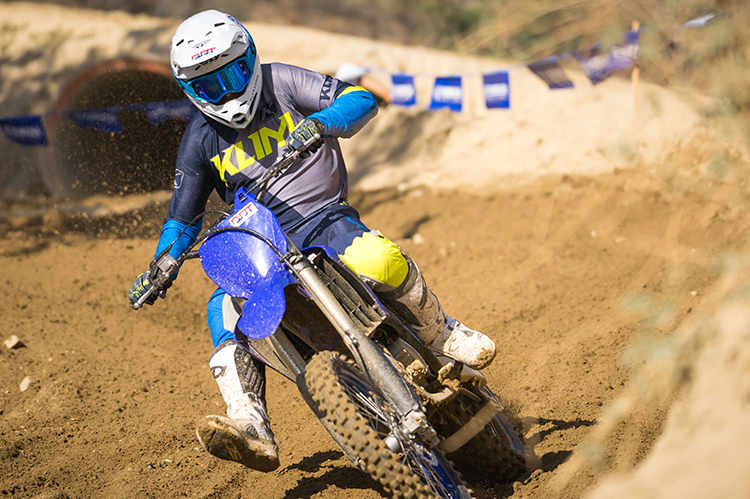
To put it simply, all of our test riders felt that the new YZ125 checked all of the boxes that we were looking for. The inertia added from the rod and crank, combined with the overall tuning of the engine really helped with the YZ’s mid to high range pull. There is some usable torque in the bottom range of the power that can help you pull out of corners, but not enough that you would want to ride the bike there, it is a 125 afterall. Riding in the mid to high felt like home for this bike, with the over-rev feeling improved for 2022, a trait higher lever riders really appreciated. The power would hold for a longer time in the over-rev, with a less pronounced sign-off. This was noticeable when taking a corner slowly before going straight up the Glen Helen’s hills. Our 170lb novice test rider never felt like he needed any more power out of the bike to make it up the hills or clear any of the jumps.
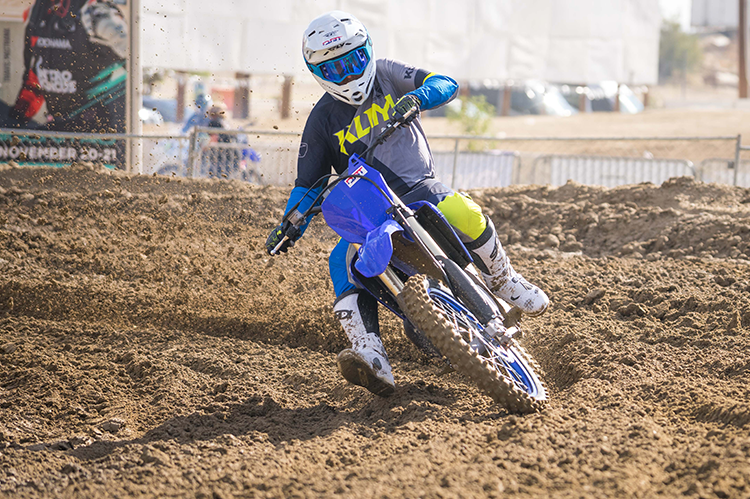
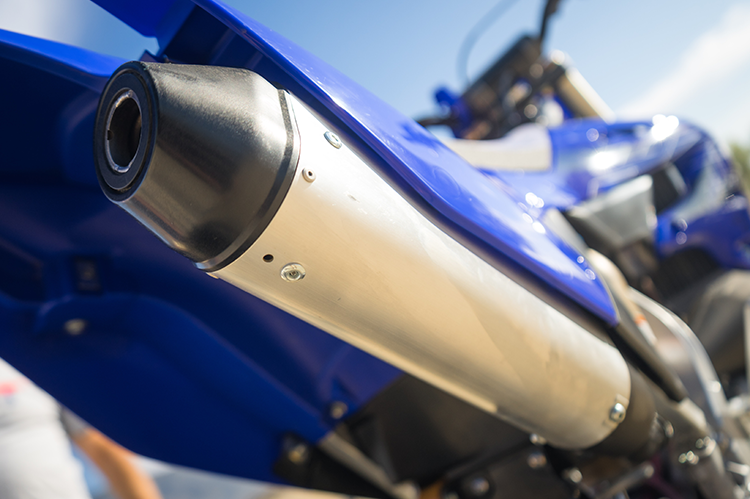
For our 195lb Vet rider, we did play around with the jetting and rear sprocket size just to make sure Yamaha had it right. And they did. For the jetting we tried a with a slightly richer main jet and a half clip leaner needle position which supposedly added more power on the dyno. This feeling led to the bike acting leaner overall and revved-out more quickly, taking away from the rideability of the stock settings. We also tried throwing a 50 tooth rear sprocket, stock comes with 49 teeth, to try and ride the bike a gear higher around the track. It also requires a longer chain to be fitted. This has the shifts coming quicker and no real gain in riding a gear high or better pull as expected. However, in the end, we preferred the bike in the stock settings rather than these changes. Stock at Glen Helen was excellent for the engine. Shifting and clutch included.
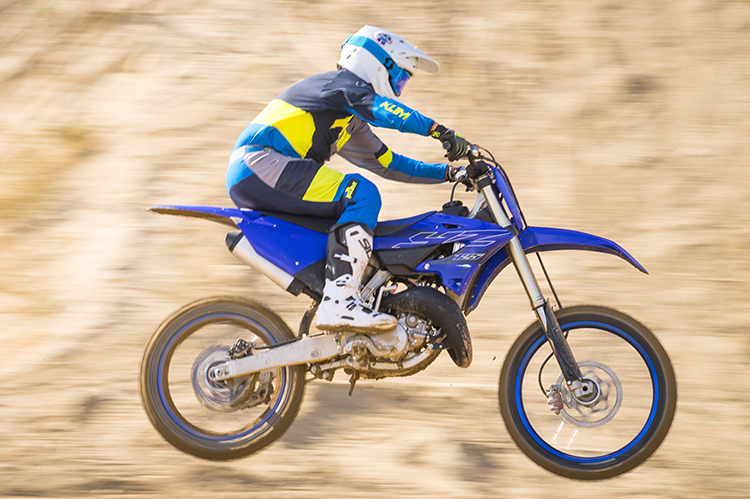
When it comes to the suspension, the stock settings felt a little soft to all of our test riders just about everywhere on the track. Even with Yamaha going with an overall stiffer setting on the 125. Once the ruts started forming, the forks had a diving sensation for our mostly heavy crew. It used a little too much stroke in the bumps and this sensation was felt when in the corners as well, but we were either a bit heavier or a little faster than the target rider. One of our test riders also mentioned feeling this same dive sensation from the shock when accelerating over the braking bumps. Having said that, this feeling was fixed with a few clicks on low speed compression both on the forks and shock.
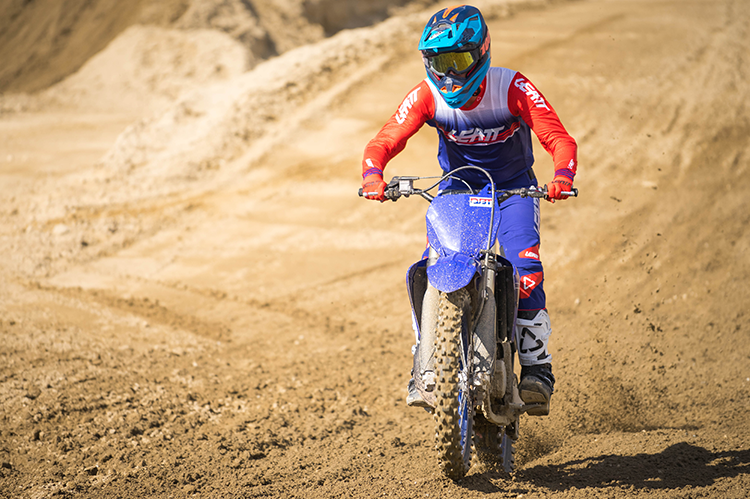
This stiffer setting kept the bike from wanting to dive in the corners and deep ruts but also added a more nimble feeling when initiating turns without feeling too stiff or ridgid. The bike accomplishes this without having the rear end of the bike sliding all over the place when accelerating hard out of the corners, even in the looser dirt. It really helped make the bike feel more comfortable to ride which in turn gives a more controlled feeling. High speed compression also helped hold-up so that any of our testers would take the bike and race it tomorrow. Or even today, but there were no races on a Wednesday night like back in the early 80’s were you could likely find a place to race mid-week with a YZ125 in So Cal.
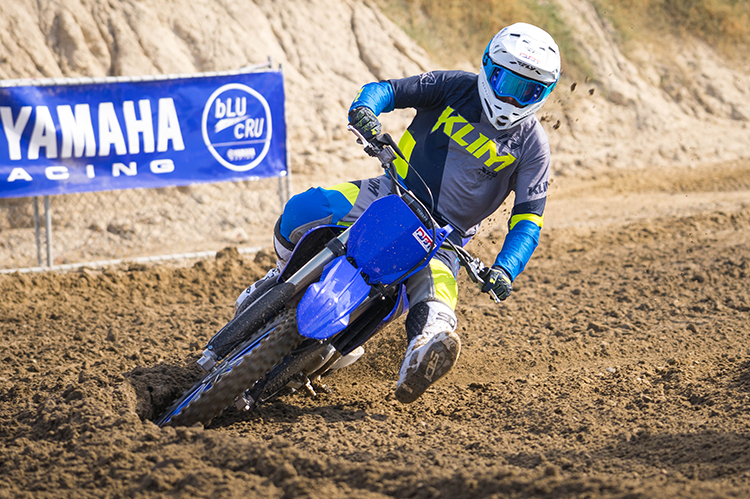
The narrower shrouds and lowered seat really helped the bike feel light and nimble, as a 125 should, but also helped the bike feel much more modern. These updates made a bigger difference than some would think for rider comfort and freedom of movement. Combine this with the updated brakes that feel powerful, which were well tested on those Glen Helen hills. With the smooth, consistent clutch pull you get a bike that gets a high rating from us on the ergonomics. None of our riders felt that we would need any changes to the cockpit and all were pleased with the setup we had with the bike. We were even very impresed with the Bridgestone tires in every aspect, especially transitioning from soft to hard sections of the track.
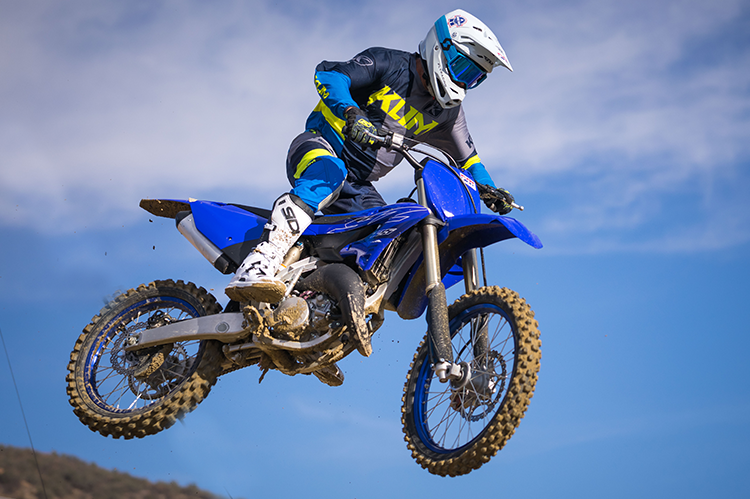
Yamaha did exactly what it needed to do with this machine. 125cc two-strokes are sitting in a space of rare air that could easily disappear. But if you are looking for the right stepping stone bike to learn and move up to bigger 250cc four-strokes from 85cc machines, this is one of the choices that is not lacking. Diving deeper Yamaha has made it more durable and likely able to get better with engine modifications in case you are serious about racing it. For a fun MX bike no matter the age or skill level, or, you are just a “125 guy”, you will rejoice in the updates. It feels like a modern 125 that has very strong mid to high pull, without losing the traditional and respected YZ125 bottom torque, has great suspension, and is very high on the fun factor. From a novice to a vet and a pro, all our test riders left the track with a smile on their face and wanting more seat time. It will be very interesting to see how the 2022 YZ125 stacks up against the Austrian 125s head-to-head, but any bike that can make a wide range of skill levels happy is a good bike in our book.
Here is a link to our friend Brett Smith’s review that goes way deeper into the experience of riding a 125: https://www.revzilla.com/common-tread/2022-yamaha-yz125-first-ride-motorcycle-review



